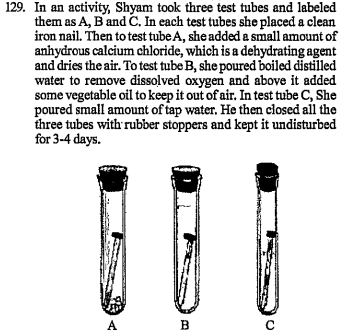Which of the following statements is CORRECT?
If two angles forming a linear pair, then each of these angle is of measure
Angles forming a linear pair can both be acute angles.
Both of the angles forming a linear pair can be obtuse angles.
Bisectors of the adjacent angles forming a linear pair form a right angle.
The correct Answer is:D
To determine which of the given statements is correct regarding angles forming a linear pair, we will analyze each statement step by step.
1. Understanding Linear Pair of Angles:
A linear pair of angles consists of two adjacent angles formed when two lines intersect. The sum of the angles in a linear pair is always 180 degrees.
2. Analyzing Statement 1:
- Statement: "Two angles forming a linear pair can each be 90 degrees."
- If both angles are 90 degrees, then their sum would be 90 + 90 = 180 degrees, which is correct. However, this is not the only possibility for angles forming a linear pair. Therefore, this statement is not universally correct.
3. Analyzing Statement 2:
- Statement: "Two angles forming a linear pair can both be acute."
- If both angles are acute, their measures would be less than 90 degrees. For example, if both angles are 89 degrees, their sum would be 89 + 89 = 178 degrees, which is less than 180 degrees. Hence, this statement is incorrect.
4. Analyzing Statement 3:
- Statement: "Two angles forming a linear pair can both be obtuse."
- If both angles are obtuse, their measures would be greater than 90 degrees. For example, if both angles are 91 degrees, their sum would be 91 + 91 = 182 degrees, which exceeds 180 degrees. Thus, this statement is also incorrect.
5. Analyzing Statement 4:
- Statement: "The bisector of the adjacent angles forming a linear pair forms a right angle."
- When a line bisects two adjacent angles that form a linear pair, each angle is divided into two equal parts. Since the sum of the angles is 180 degrees, if the bisector divides them equally, each angle will be 90 degrees. Therefore, this statement is correct.
Conclusion:
The correct statement among the options provided is:
"The bisector of the adjacent angles forming a linear pair forms a right angle."
A linear pair of angles consists of two adjacent angles formed when two lines intersect. The sum of the angles in a linear pair is always 180 degrees.
- Statement: "Two angles forming a linear pair can each be 90 degrees."
- If both angles are 90 degrees, then their sum would be 90 + 90 = 180 degrees, which is correct. However, this is not the only possibility for angles forming a linear pair. Therefore, this statement is not universally correct.
- Statement: "Two angles forming a linear pair can both be acute."
- If both angles are acute, their measures would be less than 90 degrees. For example, if both angles are 89 degrees, their sum would be 89 + 89 = 178 degrees, which is less than 180 degrees. Hence, this statement is incorrect.
- Statement: "Two angles forming a linear pair can both be obtuse."
- If both angles are obtuse, their measures would be greater than 90 degrees. For example, if both angles are 91 degrees, their sum would be 91 + 91 = 182 degrees, which exceeds 180 degrees. Thus, this statement is also incorrect.
- Statement: "The bisector of the adjacent angles forming a linear pair forms a right angle."
- When a line bisects two adjacent angles that form a linear pair, each angle is divided into two equal parts. Since the sum of the angles is 180 degrees, if the bisector divides them equally, each angle will be 90 degrees. Therefore, this statement is correct.
The correct statement among the options provided is:
"The bisector of the adjacent angles forming a linear pair forms a right angle."
Topper's Solved these Questions
- BOOK - SCIENCE OLYMPIAD FOUNDATION CHAPTER - LINES AND ANGLESEXERCISE - Achievers Section (HOTS)3videos
LINES AND ANGLES
- BOOK - SCIENCE OLYMPIAD FOUNDATION CHAPTER - LINEAR EQUATIONS IN TWO VARIABLES EXERCISE - ACHIEVERS SECTION (HOTS)2videos
LINEAR EQUATIONS IN TWO VARIABLES
- BOOK - SCIENCE OLYMPIAD FOUNDATION CHAPTER - LOGICAL REASONING EXERCISE - NON-VERBAL REASONING9videos
LOGICAL REASONING
Similar Questions
Knowledge Check
- Question 1 - Select One
Which of the following statement is correct
ATwo isobars always have the same mass numberBTwo isotopes always have the same mass numberCTwo isotones always have same mass numberDTwo isobars always have same atomic number - Question 2 - Select One
Which of the following statement is correct
 Anails in test tube A and B have not rusted while test tube C has rustedBnails in test tube A nad C have not rusted while test tube B has rustedCnails in all the three test tubes have not rustedDnails in all the three test tubes have rusted
Anails in test tube A and B have not rusted while test tube C has rustedBnails in test tube A nad C have not rusted while test tube B has rustedCnails in all the three test tubes have not rustedDnails in all the three test tubes have rusted - Question 3 - Select One
Which of the following statement is correct?
AGoblet cells secrete pepsionogen.BParietal cells secrete hydrochloric acid.CArgentaffin cells secrete mucus.DChief cells secrete gastrin.

